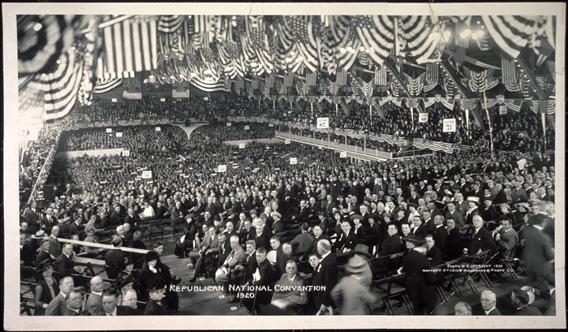In baseball, the home team always bats last. In football, the visiting team gets to call the coin toss. In basketball, they jump for first possession of the ball. But what about the American political system? What decides whether the Republican or Democratic National Convention goes first in an election year?
For now, incumbency. There’s no hard-and-fast rule governing the convention calendar, but since 1956, when Dwight D. Eisenhower held office, the party in control of the White House has traditionally gone second. Between 1864 and 1952, the Democrats routinely followed the Republicans. The one exception was in 1888, when POTUS Grover Cleveland’s Democratic Party preceded the GOP, which would nominate Benjamin Harrison. Before that, starting with the two parties’ first nominating conventions in 1832, it was a bit of a toss-up.
Political parties, which go unmentioned in the Constitution, began to crystallize around the turn of the 19th century. At first a party’s presidential and vice presidential nominees were selected by a Congressional caucus, but over time, as the United States expanded, party members who didn’t hold seats in Congress wanted to be involved in the choice. The Anti-Masonic Party was the first to stage a convention, in 1831, followed a year later by the Democrats and National Republicans. (The modern Republican Party grew out of the Whig Party in 1854.)*
While a party’s presidential and vice-presidential nominees tend to be a foregone conclusion going into a modern convention, this wasn’t always the case. Until the 1950s, delegates didn’t know who their final nominee would be until a “rolling roll call of the states” yielded a candidate with the required two-thirds majority. Not only were delegates far more divided in terms of which nominees they arrived supporting, but they were also permitted to switch their votes during the convention if a different presidential hopeful made an especially persuasive case. Back-room dealing and shady negotiation played a substantial role in the process. In fact, it wasn’t until 1968, when Democrats fully embraced the primary system (thereby committing delegates to vote for the winner of the state primary), and 1972, when Republicans jumped on the bandwagon, that conventions became the utterly predictable and bloodless ceremonies they are today.
*Correction, Aug. 28, 2012: This article originally stated that the Republican Party staged its first convention in 1832. It was the National Republican Party.
